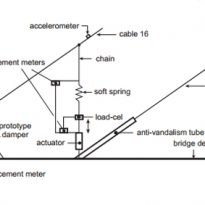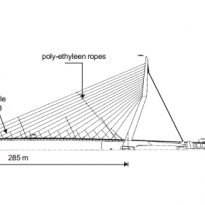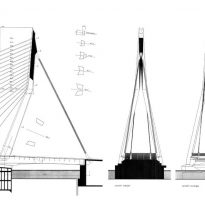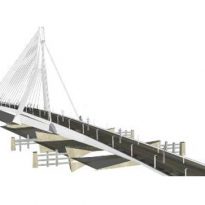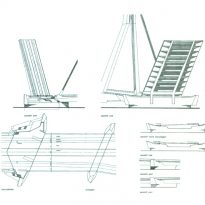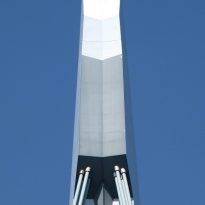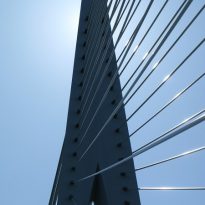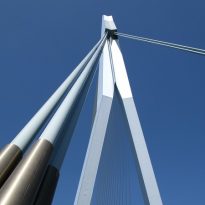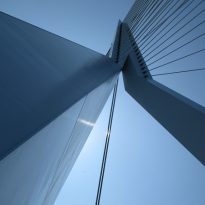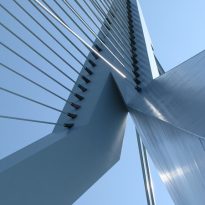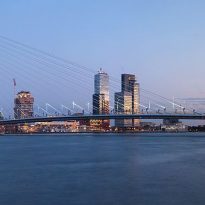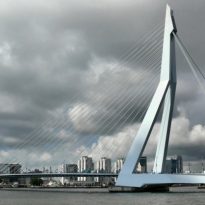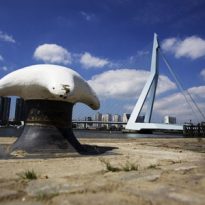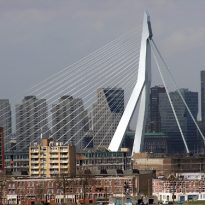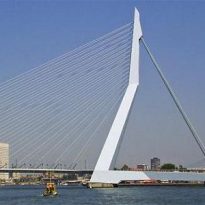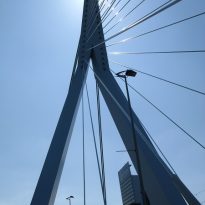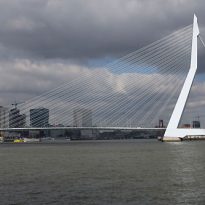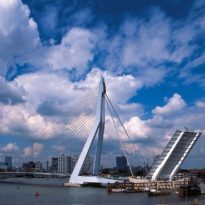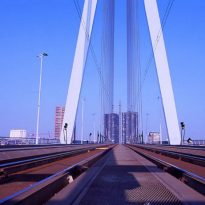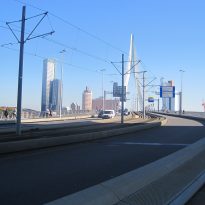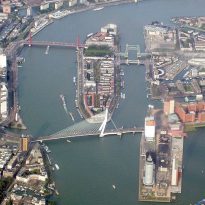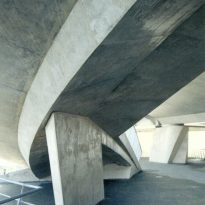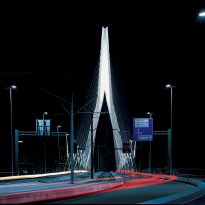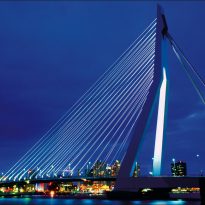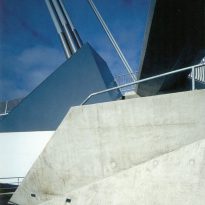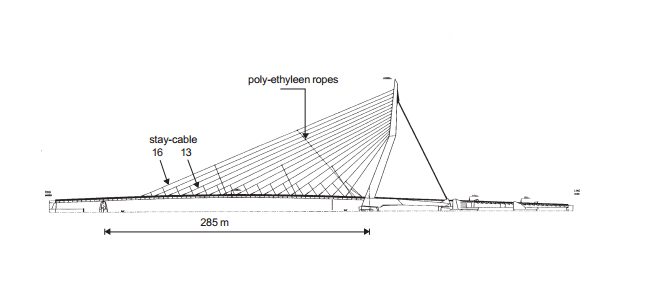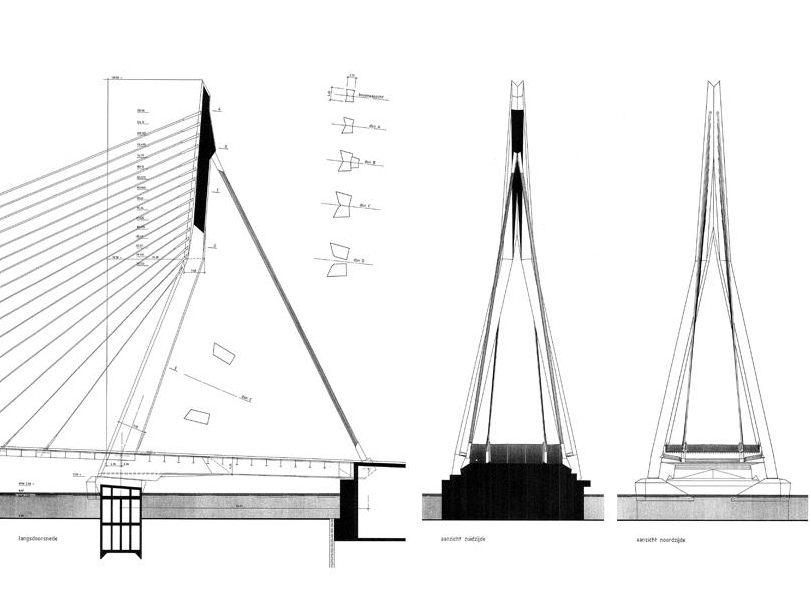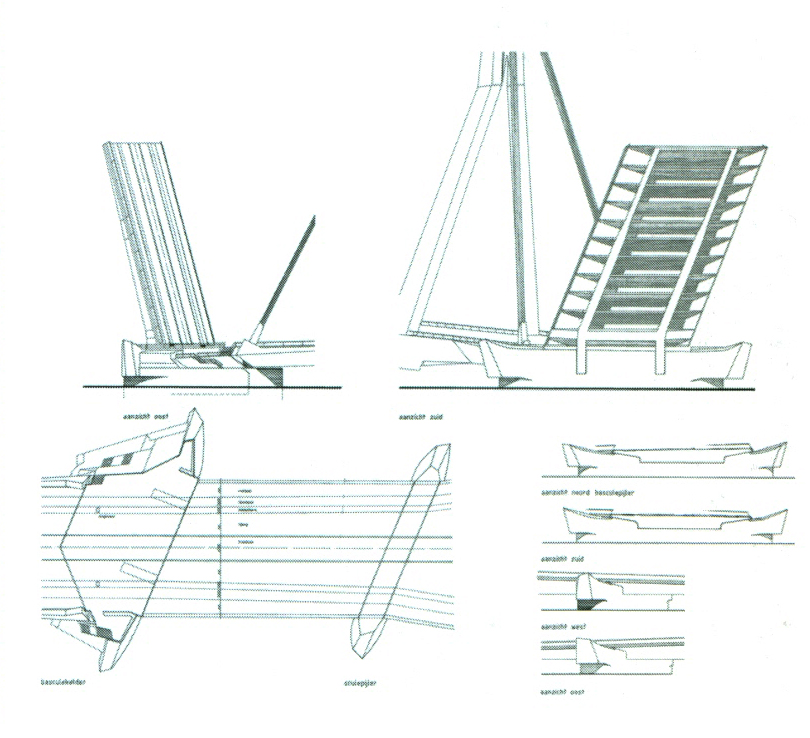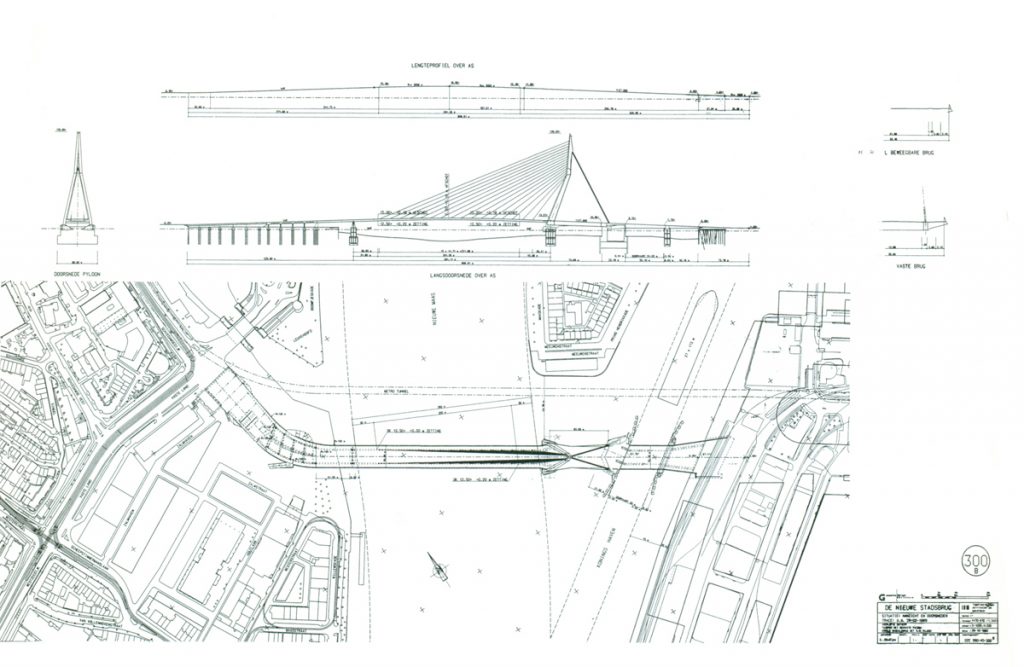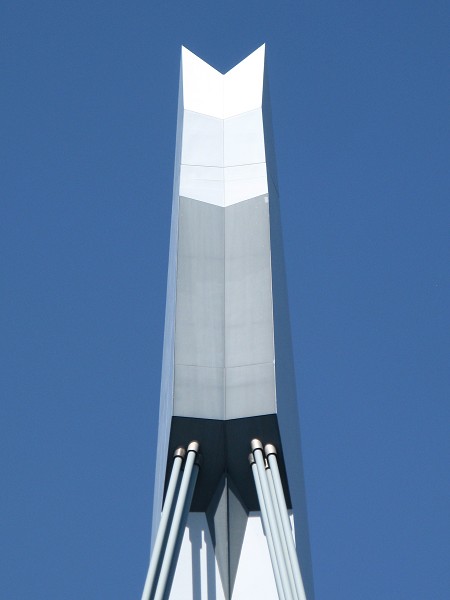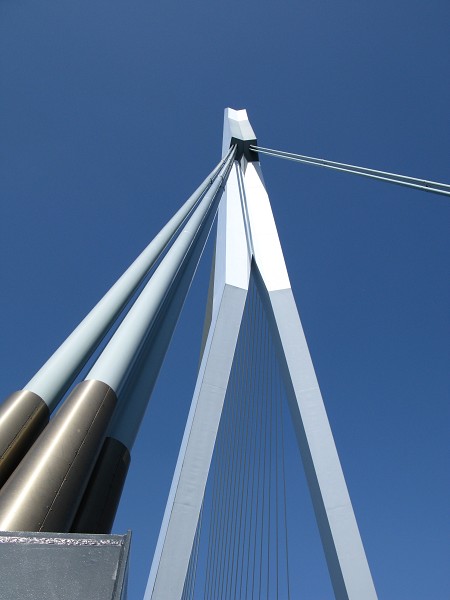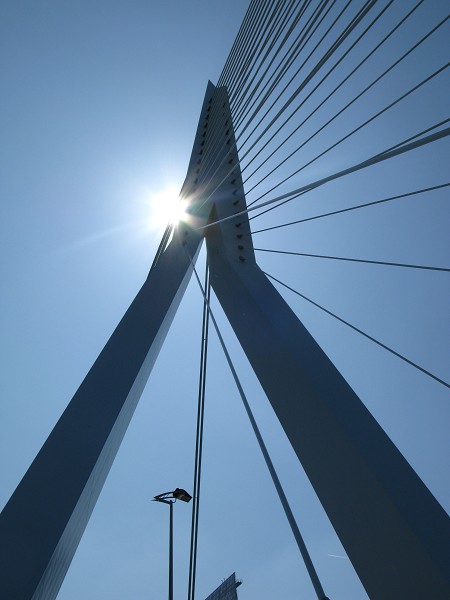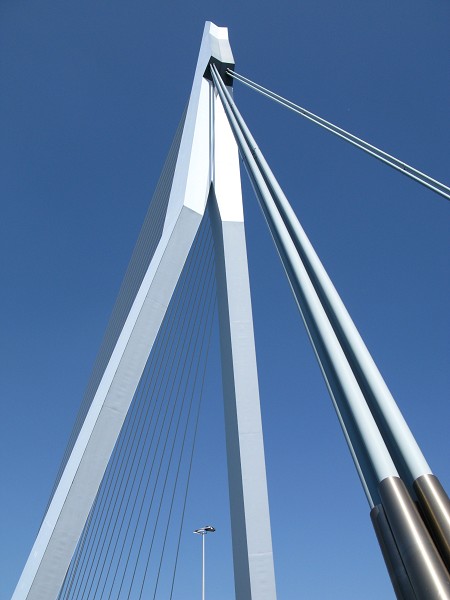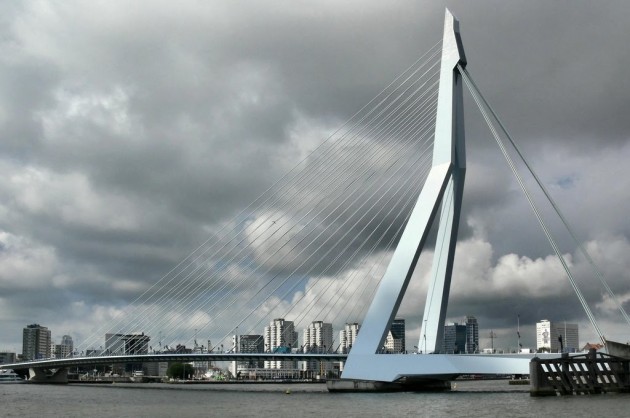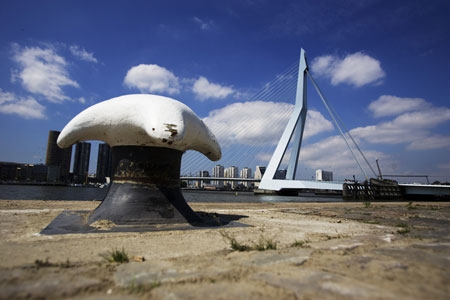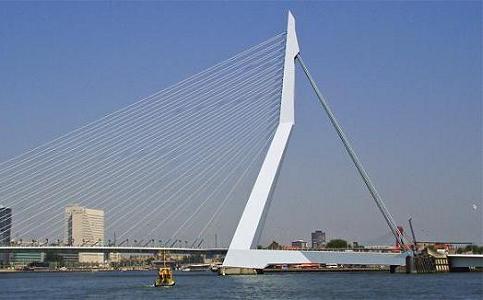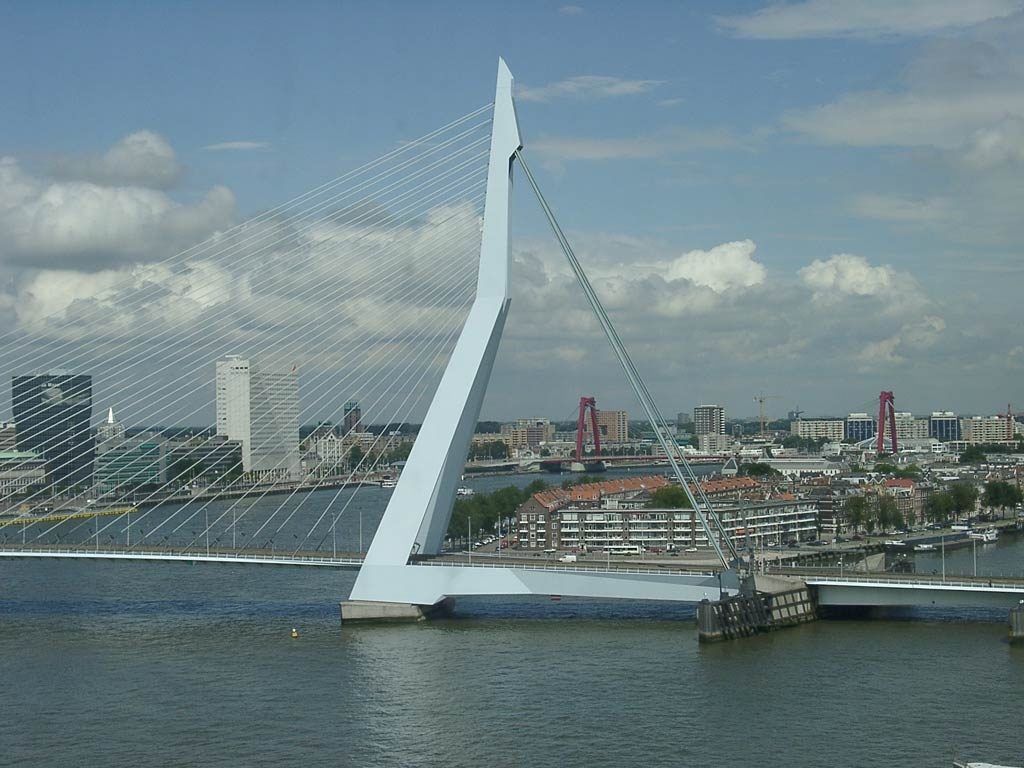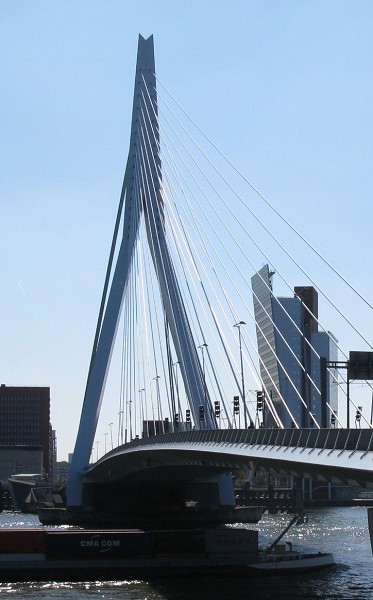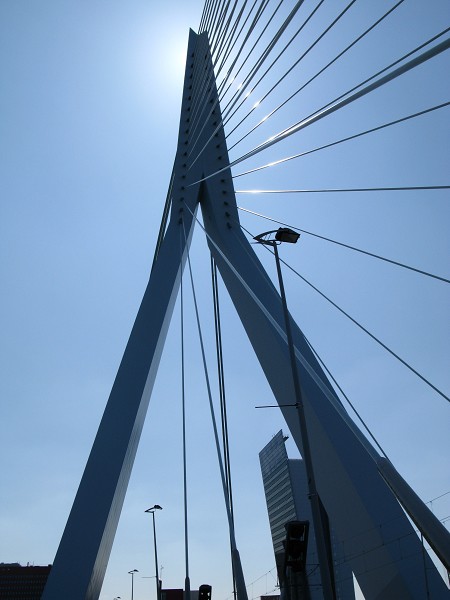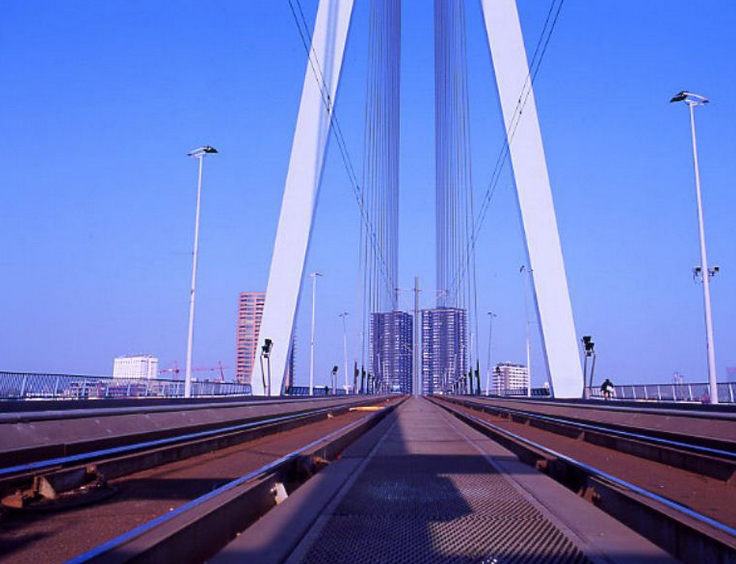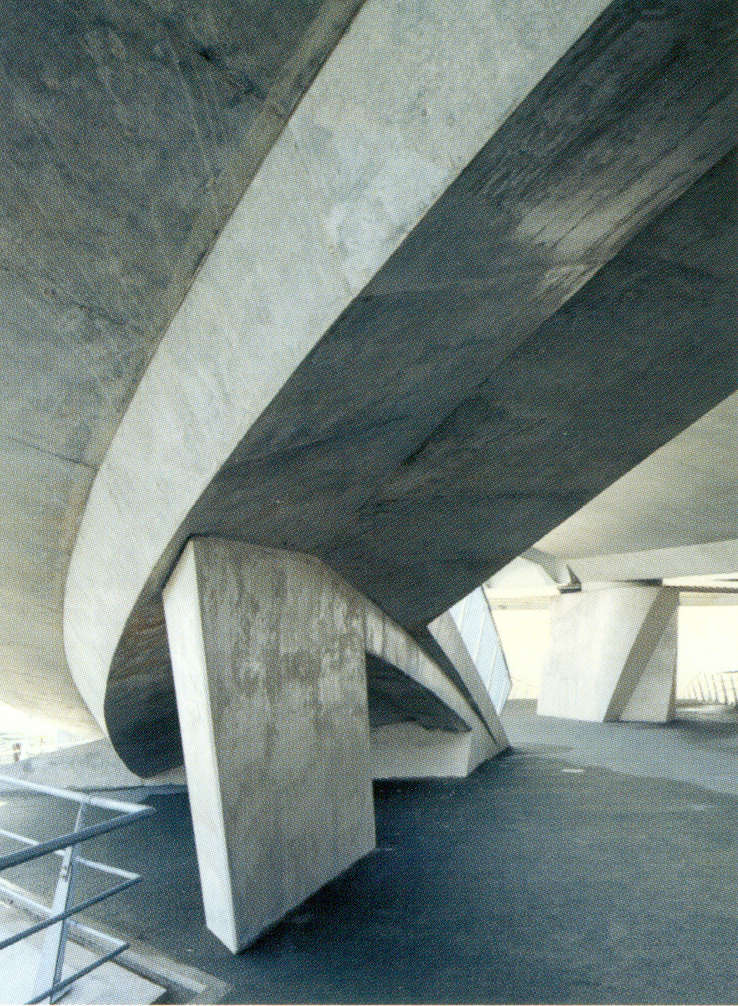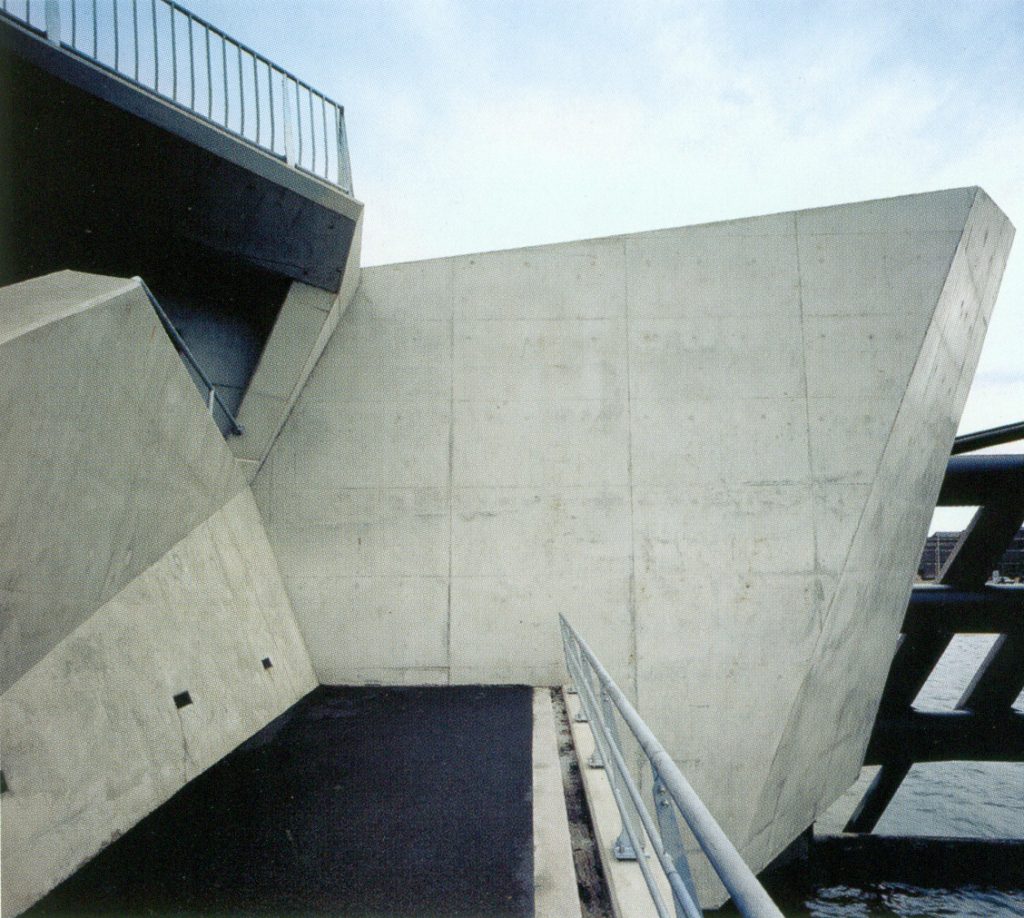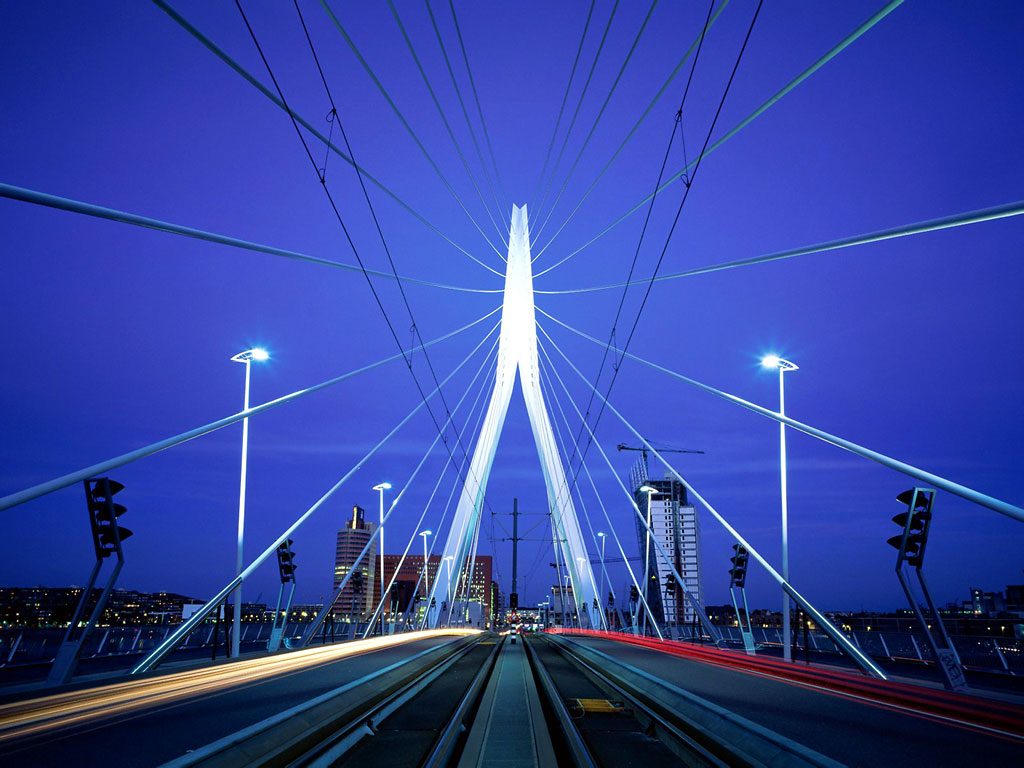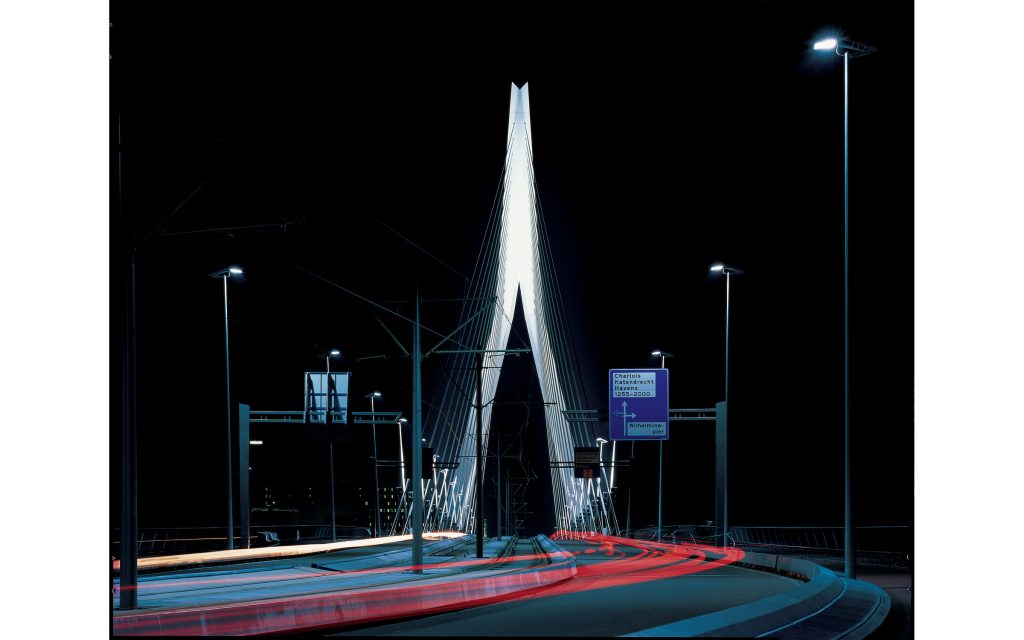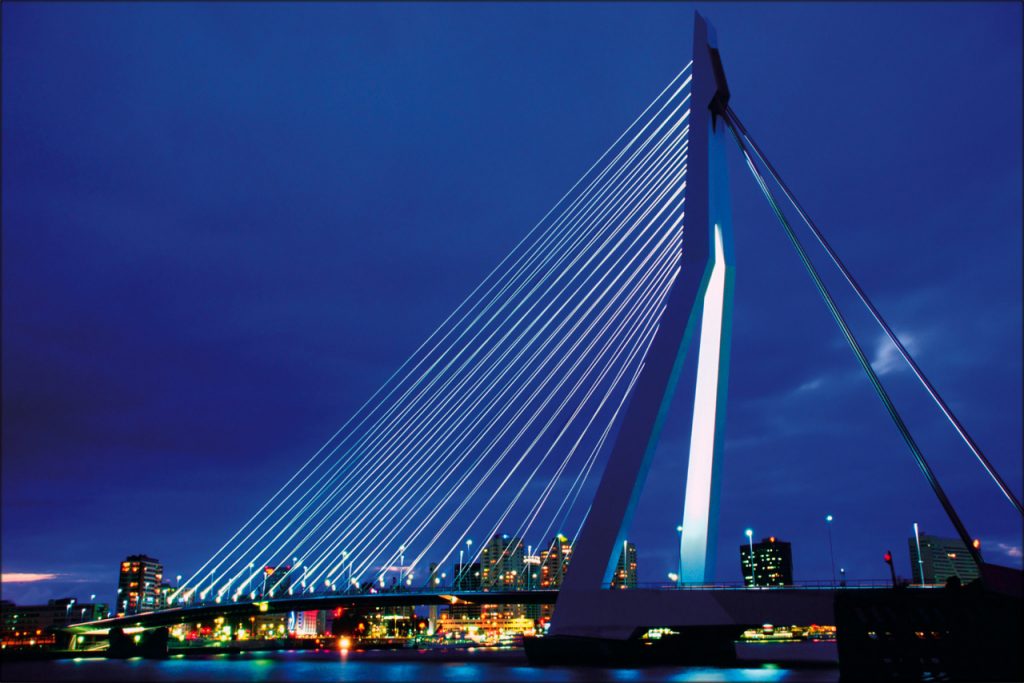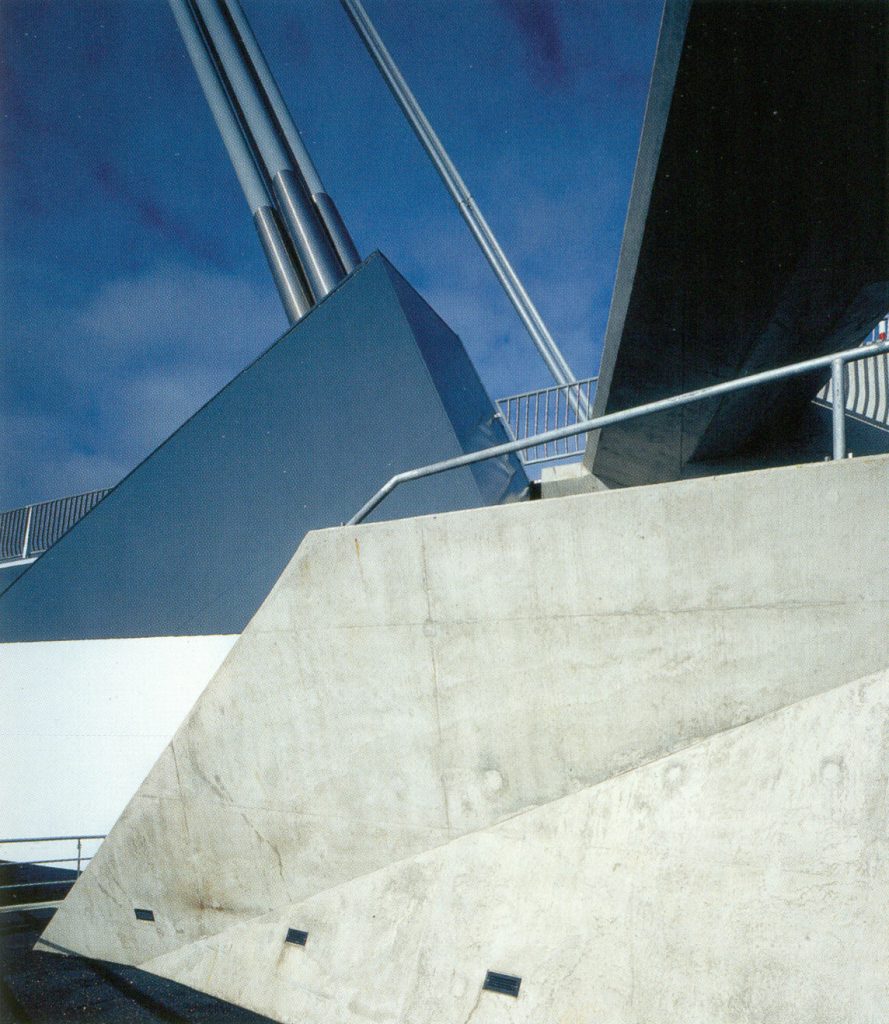Erasmo Bridge

Introduction
The Erasmus Bridge is a reflection of the industrial character of Rotterdam and helps in organizing traffic flows, operating as a last crossing point between the Northern and Southern parts of the city.
This bascule bridge also called “The Swan” or “The Harp”, you can open or close in two minutes giving way to larger vessels. Measured 802m long and 139 high. Solidly anchored to the coast and built with a slight inclination, structure conveys a sense of slimness and lightness. UNStudio proposes become recognizable forms latent or hidden forces in nature. “The Swan” as quickly called the local population, with its deployment of road, slightly curved and asymmetrical and unique pylon joined the urban landscape of the city, not only offering a three-dimensional road, also meeting places, as coffee that unfolds to start up the driveway.
Situation
The bridge has been built over the river Maas him in order to connect the historic core of Rotterdan, Netherlands with the southern area of recent expansion. Rotterdan is the largest port in Europe and multicultural center, being common for filming music or video ads scenario bridge.
It also provides a connection between the financial district and a former bay that the city center has been transformed into residential and offices.
Concept
The bridge, which has become the official city logo was designed by Ben van Berkel and Caroline Bos as a flat and functional construction, which ended up becoming a work of art. Its particular shape symbolizes the union of the two neighborhoods, historic and emerging connected by the bridge, responding to the much coveted symbol of identity to which he aspired city.
Description

A decisive role in the project develops light, in fact, daytime blue lighting feature makes the bridge structure almost merges with the sky color. However, at night, artificial light from a bright white hue makes the profile of the work is clearly visible, even from afar.
Pylon
Seen from the front, on the board, the pylon 139 meters high resembles an inverted “Y”. Both legs and rest on the bridge structure allowing the passage of the railroad, road traffic with 4 tracks, a bike path and a pedestrian. By joining the two huge paws remain in a tower where the steel cables and which is accessed by a staircase are anchored.
Contacts
- Bridge Type: Cable-stayed rocker
- Total Length: 802 meters
- Longer length: 280 meters
- High Tower: 139 meters
- Width 34 meters
- Weight: 6800 tn
- Luz Bridge: 17 meters
- Use: rail, road traffic, bicycle, pedestrian
Structure
The whole complex is supported by a solidly anchored to one of the two banks by cable pylon cable-stayed steel gigantic. Subsequently passes under the support surface in a free span of 284 meters. Pylon 32 SWR out who stand on the bottom of the board, in its longest stretch and 8 other south side to balance the weight.
The support system is reinforced by the presence of five concrete pillars, the eight accompanying diagonally arranged holes, maintaining the construction in balance. Throughout its structure two sections, a tower height of 139 meters asymmetric and drawbridge opening for scale, located at the southern end of 89 meters in length that allows the passage of large vessels whose height did not differ allows them to pass under the bridge, the light from the surface of the river is 17 meters.
Materials
The Erasmus Bridge is an elegant symbiosis between concrete and steel.
Pylon 139 meters high SWR out 32 base coated with a metallic coating of about 4 meters long that protects against corrosion. Cables also subject to hydraulic tensioners have been placed that help the stability of the bridge before the passage of vehicles or rail.
Anti-shock absorbers
Shortly after its inauguration was found that the bridge was unstable from a wind force 6 problem was neutralized by a system of anti-shock dampeners.
A team from the Technical University of Delft found that after a certain force, the wind made the longest wires to length resonated at a specific frequency vibration transmitting said entire bridge structure and putting in serious danger vibrate. Among the measures, the most significant was the connecting buffers between the cables and the platform, with satisfactory results.
Video



